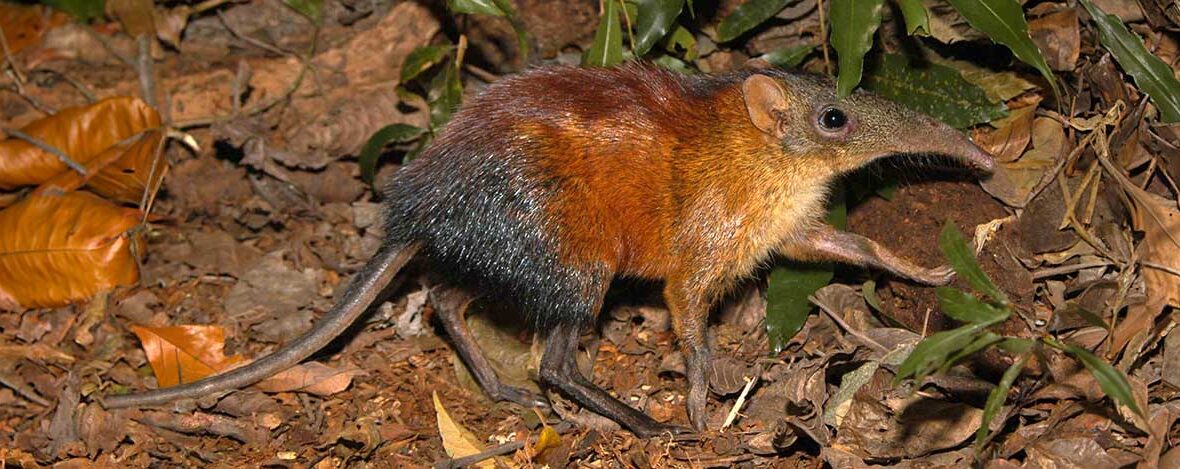
The grey-faced sengi may look like a rodent, but they are actually more closely related to elephants, manatees, aardvarks, and hyraxes. These critters are a species of elephant shrew, and are found in the Udzungwa Mountains of south-central Tanzania. Unfortunately, these critters face the threats of habitat loss and destruction at the hands of deforestation, fires, & fire suppression; hunting; and trapping. The IUCN lists these critters as Vulnerable. Their population trend is unknown at this time.
First the Stats…
Scientific name: Rhynchocyon udzungwensis
Weight: Up to 1.5 lbs.
Length: Up to 11.8 inches, plus up to a 9.8 inch tail
Lifespan: Up to 3.5 years
Now on to the Facts!
1.) These critters were only recently discovered in January, 2008. Until then, there were only 15 known species of elephant shrew.
2.) Until the discovery of the grey-faced sengi, the last discovery of an elephant shrew was approximately 126 years ago!
3.) Grey-faced sengis are about 25% larger than any other known elephant shrew.
4.) They prefer moist, submontane and montane evergreen forests, upper montane closed-canopy forests, and bamboo thickets.
5.) Their only known predators are hawks and possibly large lizards.
But wait, there’s more on the grey-faced sengi!
6.) Humans are their most dangerous foe, as they not only hunt sengis for bush meat, but also set fires to their habitat to clear the way for agricultural expansion.
7.) These sengis build a nest consisting of leaves and soil with up to 5 nests per tree.
Did you know…?
A group of sengis is called a whisker.
8.) Females undergo up to a 50+ day gestation (pregnancy) that yields up to 2 babies (sengis).
9.) Numerous sengis live in protected habitats. Since the nature preserves don’t allow hunting or destruction of the forest and/or animals, the grey-faced sengi is almost certainly guaranteed protection from assault by the outside world; sans from illegal hunting.
10.) Only 2 populations are known to exist. 1 in the Udzungwa Ecological Monitoring Center and the other in Udzungwa Mountains National Park.
But wait, there’s still more on the grey-faced sengi!
11.) The grey-faced sengi is diurnal (active during the day).
12.) They are thought to be monogamous (mate for life).
Now a Short Grey-Faced Sengi Video!
Be sure to share & comment below! Also, check out the Critter Science YouTube channel. Videos added regularly!
Want to suggest a critter for me to write about? Let me know here.
Some source material acquired from: Wikipedia & IUCN
Photo credit: Francesco Rovero (MUSE)



